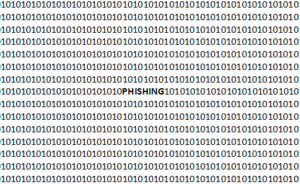Phishing Alert: 8 Tips to protect yourself from Attacks
It’s as easy for hackers to phish out your personal data as it is to sit in a canoe on a still pond, cast the bait and wait for the fish to bite.
 So many people fail to learn about phishing scams, a favorite and extremely prevalent scam among cybercriminals.
So many people fail to learn about phishing scams, a favorite and extremely prevalent scam among cybercriminals.
A type of phishing scam is to lure the user onto a malicious website. ZeuS (Zbot) is such an example, planted on websites; visit that site and it will download a virus to your device that will steal your online banking information, then forward it to a remote server, where the thief will obtain it. Very clever.
But that ingenuity is contingent on someone being gullible enough to open a phishing e-mail, and then taking that gullibility one step further by clicking on the link to the malicious site.
10 Phishing Alerts
- An unfamiliar e-mail or sender. If it’s earth-shaking news, you’ll probably be notified in person or via a voice phone call.
- An e-mail that requests personal information, particularly financial. If the message contains the name and logo of the business’s bank, phone the bank and inquire about the e-mail.
- An e-mail requesting credit card information, a password, username, etc.
- A subject line that’s of an urgent nature, particularly if it concludes with an exclamation point.
Additional Tips
- Keep the computer browser up-to-date.
- If a form inside an e-mail requests personal information, enter “delete” to chuck the e-mail.
- The most up-to-date versions of Chrome, IE and Firefox offer optional anti-phishing protection.
- Check out special toolbars that can be installed in a web browser to help guard the user from malicious sites; this toolbar provides fast alerts when it detects a fraudulent site.
Robert Siciliano is an identity theft expert to BestIDTheftCompanys.com discussing identity theft prevention. For Roberts FREE ebook text- SECURE Your@emailaddress -to 411247. Disclosures.


























